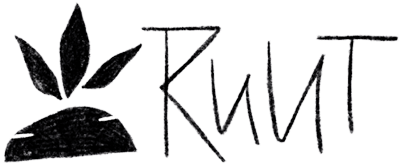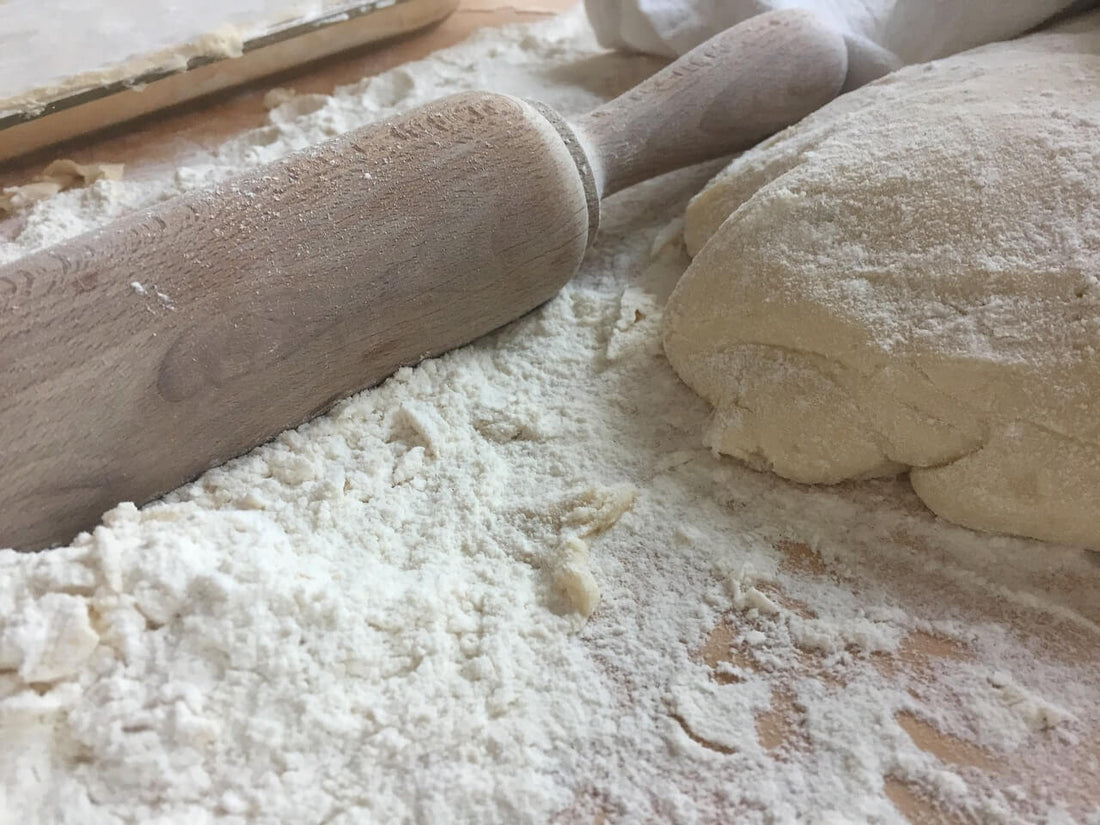Ruut provides an overview of gluten-free alternatives and reveals what they are best suited for.
A gluten-free diet has been on the rise for a few years. Gluten-free products are increasingly in demand, not only by people who have to do without the so-called gluten protein due to diseases such as celiac disease or gluten intolerance, but also by representatives of certain forms of nutrition - for example the Paleo diet . A popular food are gluten-free baking mixes , thanks to which we still don't have to do without our beloved rolls, cakes and the like. With the right products and a few tips, gluten-free baking is a breeze , even for beginners.
Which flour is gluten free? An overview
We have listed the most common alternatives and possible binding agents in the next section so that you can get an overview . Here we also provide you with information about the associated types of flour, the possible uses, the taste and the consistency of the finished baked goods (compared to flours containing gluten).
|
Flour/ Characteristic |
cassava flour | nut flours | cereal flours | cornmeal | rice flour | buckwheat | bean flours | Strength | binder |
|---|---|---|---|---|---|---|---|---|---|
| Gluten free | Yes | Yes | Yes | Yes | Yes | Yes | Yes | Yes | Yes |
| grain free | Yes | Yes | no | no | no | no | Yes | yes, except cornstarch | no |
| paleo | Yes | Yes | no | no | no | no | no | Yes | no |
| AIP | Yes | no | no | no | no | no | no | yes, except corn & potato starch | no |
| pseudo grain | no | no | no | no | no | Yes | no | no | no |
| The taste | neutral | nutty, sweet | mostly neutral | neutral to light corn taste | neutral | somewhat bitter, nutty own taste |
beany | neutral | neutral |
| Usable alone | Yes | sometimes, more suitable for many sweet pastries | sometimes | no | no | sometimes | no | no | no |
| 1:1 substitute for wheat flour | often | no | sometimes | no | no | no | no | no | no |
| examples | also called cassava flour | almond flour, coconut flour, hazelnut flour |
teff flour, millet flour, sorghum flour, oat flour |
- | whole grain rice flour, white rice flour |
buckwheat flour | chickpeas, soybeans, fava beans |
corn starch, potato starch, Tapioca, Arrowroot Flour |
psyllium husk flour, guar gum, xanthan gum, locust bean gum |
| use | all pastries | Cakes, sweets, breads | all pastries | all pastries | all pastries | rather savory pastries | savory pastries | all pastries | all pastries |
| consistency of the pastry | juicy, fluffy, similar to pastries containing gluten, stays fresh for days |
slightly crumbly, moist & juicy (Pastries with coconut flour rather dry) |
Pastries dry out faster after baking |
heavy, dries quickly more crumbly |
dry, crumbly | juicy, fluffy | brings good structure to the pastry, if it is with other flours is mixed |
moist if too much gummy, relaxed |
consistency of the pastry gets better through the Addition of binders |
The complete overview table can be downloaded here as a PDF .

Comments on the flour alternatives
- Cassava Flour : High in carbohydrates (contains resistant starch), low in protein and fat, contains dietary fiber. Cassava flour can often replace wheat flour 1:1 (depending on the recipe).
- Nut flours : High in fat and protein (except coconut flour, which has less fat and protein and more fiber). The finer the grind, the better the consistency of the pastry. Nut flours bring structure to the pastry and moisture (except coconut flour). Since the flour has more fat, the binding power is not as good.
- Grain Flours : Similar in nutritional value to wheat flour. Teff and oat flour in particular bind well.
- Cornmeal : High in carbohydrates. Brings moisture and structure to the pastry.
- Rice Flour : Rich in carbohydrates. Unless ground very finely, it can be gritty in the pastry. The flour only binds during baking.
- Buckwheat : Rich in carbohydrates. Low in protein, fat and fiber.
- Bean flours : High in protein, carbohydrates and fiber. Best mixed with other flours for the strong flavor. Soy flour binds well and can often be used as an egg substitute.
- Starch : High in carbohydrates, free from protein and fat. Bring moisture and airiness into the pastry and bind. Cornstarch helps with the crumb and makes cookies crispier. Tapioca is rubberier than other starches.
- Binders : As a substitute for the missing gluten, binders are an important component in many gluten-free recipes. Always add in small amounts!

Alternative to flour - what you should know
A large number of different gluten-free flours can now be purchased, and no longer only in organic shops. As with the gluten-containing counterparts, these can be divided into different groups .
Depending on the type of pastry, some flour alternatives can even be used without any additional flours or binding agents. You should note that this depends on what you want to prepare - for example a bread, pasta, biscuits or a yeast dough. Accordingly, the note "yes" after the item "Exclusive use possible" only means that this is possible for some baked goods and not that it applies to every pastry. In our recipes you will therefore find some that are based purely on cassava flour as well as some that require the addition of additional flour or binding agents. As long as you stick to the instructions, you will definitely succeed!

Gluten-free flour made from cassava - that's what makes it so special
Gluten-free flour is a good alternative to conventional flour made from wheat, rye or similar. However, you often need some practice and skill to use it correctly , as most flour alternatives differ in their properties from classic products - for example, they contain more starch and less fat. Sometimes you can't simply replace gluten-containing ingredients in recipes 1:1. Either you have to adapt the entire recipe to the new food, or you start looking for a new recipe that is designed for gluten-free preparation from the start. In addition, the majority of gluten-free flours require the addition of starch in order to achieve the desired consistency in the end. We therefore recommend that you use suitable recipes as a guide so that you are really satisfied with the result in the end. Just have a look here . If this is too much effort for you, there is of course also the option of buying a ready-made baking mix – for example in our online shop .
However, you can partially circumvent the points mentioned by using cassava flour , which is why it is our favorite gluten-free flour. Cassava flour is made from the cassava root - also known as yuca root or cassava - and is naturally gluten-free and nut-free. The root is native to east Peru and west-central Brazil, but is now cultivated in several tropical countries. For many people from Latin America and the Caribbean, it is still a staple food today. In order to obtain the flour from the cassava root, it is first peeled and then ground completely and very finely.

Gluten-free flour for baking: cassava flour is ideal
A little tip: First try specially developed gluten-free recipes, such as those from our blog , to get a feel for the new baking and the new ingredients, and only then start experimenting. The more experience you have in gluten-free baking, the more you will develop a feel for how the different flours behave and what you can use them for.





